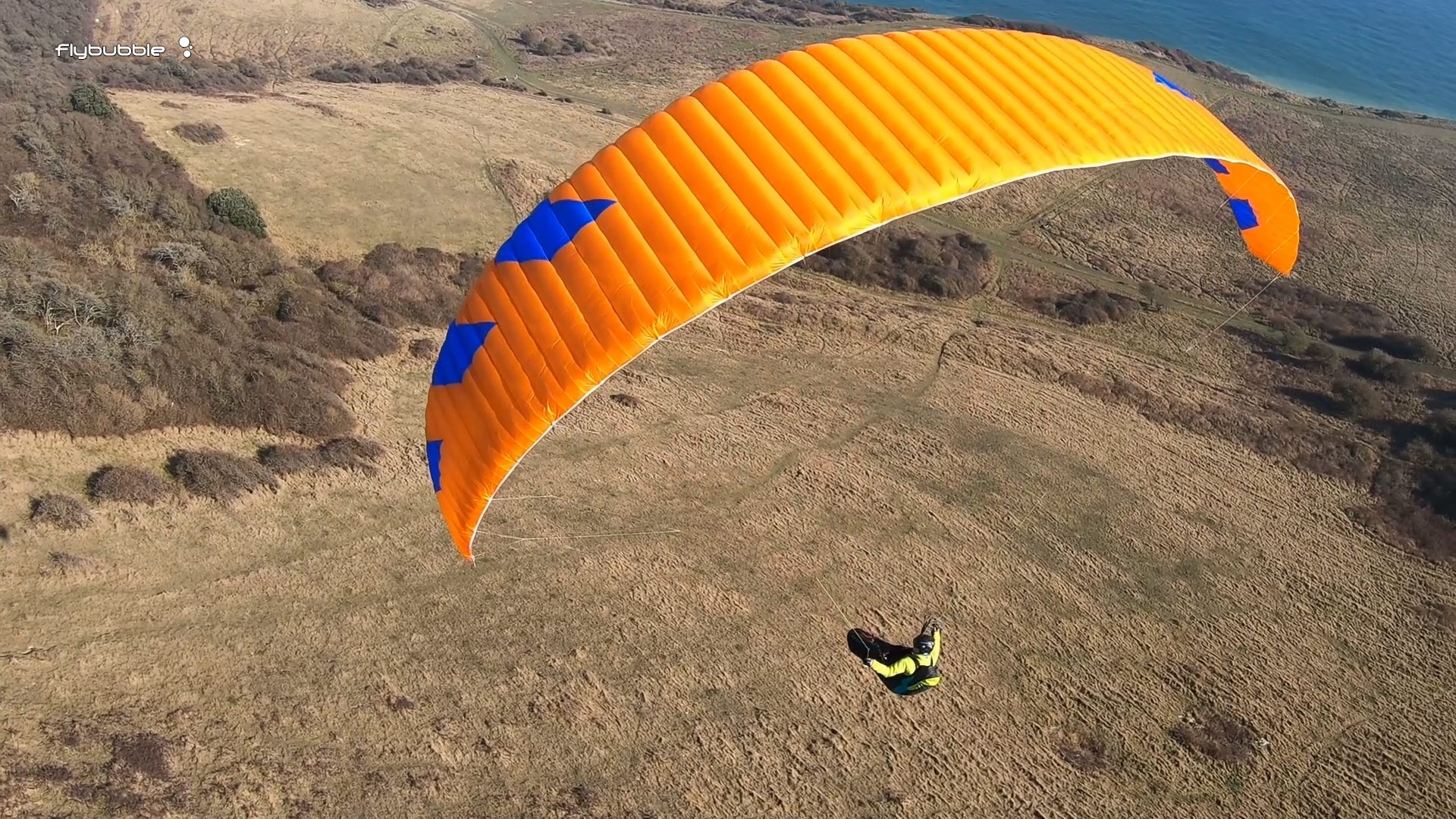
The Phi MAESTRO is designed for recreational pilots with some experience who want to excel at cross country flying or are looking for a wing with feeling and feedback. It’s what we call a ‘high B’ or B+ for short, which means it passes the standard EN-B certification tests, but requires more piloting skill to fly when compared to something like the Phi Tenor.
Phi MAESTRO: Setting the stage
We were honoured to host Hannes Papesh in the UK as he gave a tour of evening talks and testivals to share his extensive design knowledge and vision for the sport. He is clearly passionate about design, and his ‘parameterised design approach’ allows him to apply his experience of each structural element to build on his successes, fast.
There has been an impressive progression in the build-up to the MAESTRO. The Sonata (EN A) is an altogether lovely first wing, the Symphonia (A+) blew me away with responsive fun, the Tenor (B) and Tenor Light seem to go fast and far when chasing XC. Phi has quickly established a strong foundation of outstanding wings, with offshoots like the lightweight Viola and the tandem Concerto filling out the range. But Hannes always felt the ‘high B’ class (XC Class) was his special discipline, and he was eager to show the world just how well a ‘safe’ low-aspect ratio wing could perform.
In the past, this objective has sometimes come at a cost to handling. Wings built with performance in mind can produce stiff, unresponsive wings with low feedback. I was hoping the MAESTRO would instead surprise me with some of the Symphonia’s sweet ability to move like a dancer in the sky.
Phi MAESTRO: Construction
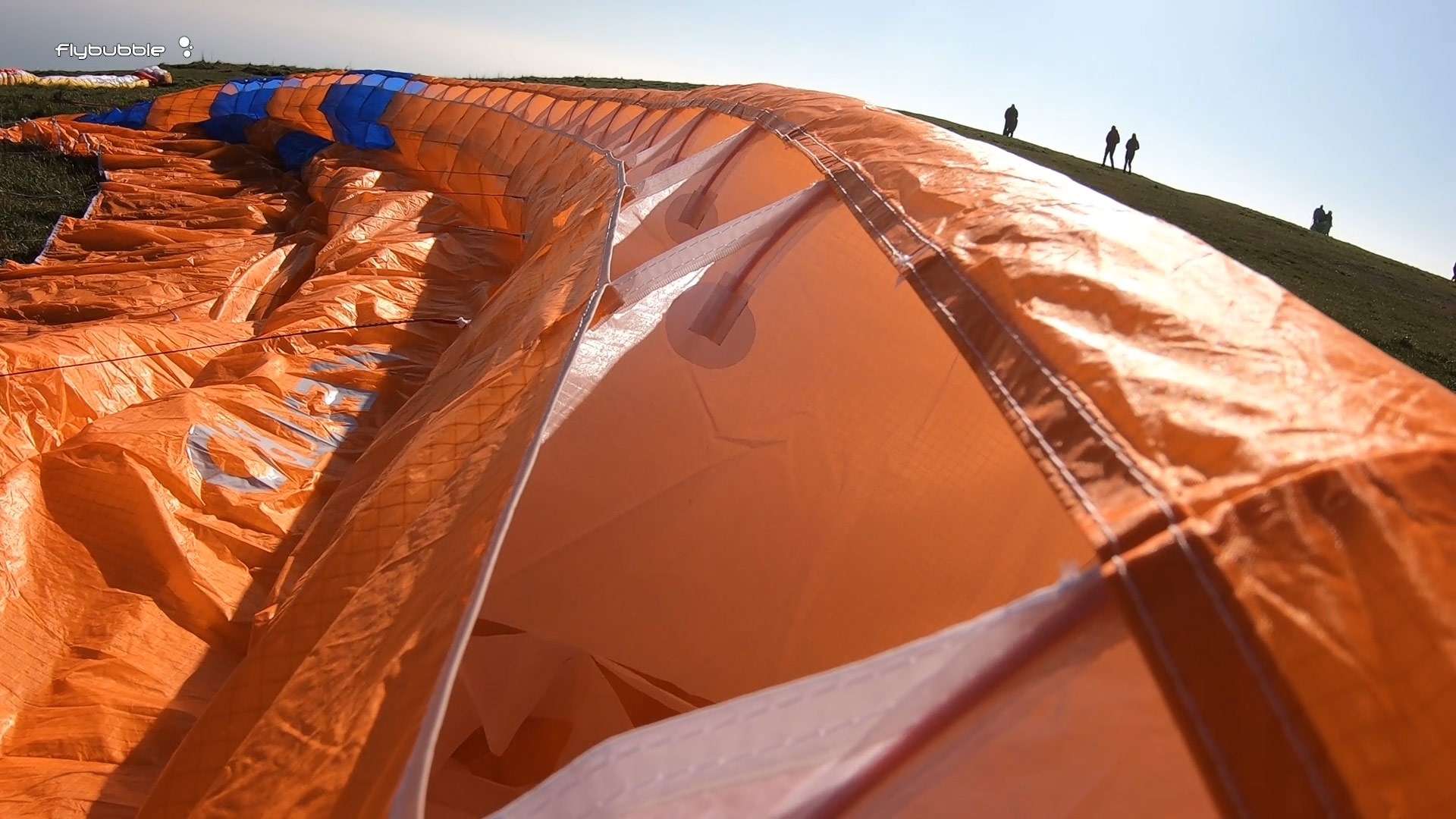
The limited line layout reduces the drag to a minimum: 2As, 2Bs+stabilo, 2Cs. 18cm (long) riser travel on speedbar gets the speed up to the top of the class. The clean sail cut, miniribs, and double zigzag 3D shaping show evidence of precise engineering. The little leading edge half-moon inserts in the centre of each cell effectively double the cell number without adding weight, producing a leading edge that retains more performance.
The PHI rucksack is very minimal, and some pilots are disappointed it’s not like the plush offerings from some other brands, but it is designed to be reduced and light, but still robust and convenient to carry. It can be packed very small, to minimize storage space in the harness.
Phi MAESTRO: On the ground

It does move around a bit in strong wind and requires pinning on the C risers and brakes together. Using the centre As only in strong wind produced a clean and easy launch.
When overhead, on a slope, it does have a tendency to move ahead (wanting to fly) and requires a dab of control brake to keep it in check. If you are too heavy-handed with this, it will drop back and require a bit of management. This will highlight your lack of groundhandling skills if you upgrade to the MAESTRO too early. For pilots with the right skills, it offers that wonderful one-step acceleration. This is a complete contrast to the Nova MENTOR 6, which does not move ahead, is tolerant of heavy hands, but equally does not give you that little speed impulse which is so helpful for short launches in light conditions.
Phi MAESTRO: In the air

Timing is everything on the MAESTRO. When your inputs are fast, they can be small and delicate, and the wing responds, so for pilots that are ‘in tune’ it is delightfully light to fly. It has a fair amount of passive stability, but I did feel that it required me to stay on the controls to put in the small active flying inputs that would keep the wing in the sweet spot. Carlo felt the wing was fairly tolerant of being ‘given the reins’, and that it isn’t necessary to catch the wing: it just gives a fairly high level of feedback. Nonetheless, I had a few tip tucks in moderate thermals that suggested I might have been a bit lazy (or distracted) and I adjusted my flying style accordingly.
You can certainly feel what is going on in the air. This is especially noticeable on speedbar – where some wings will tension up and provide very little information about the air currents, the MAESTRO passes everything through to the pilot.
This might be unnerving for newcomers to the class. I’d suggest the best match is for pilots who already have some time on a high B wing, or pilots coming down from EN C. Alternatively, spend a season building up ‘easy airtime’ and you’ll learn what the wing is telling you, and tap into the performance boost it can deliver.
Phi MAESTRO: Handling
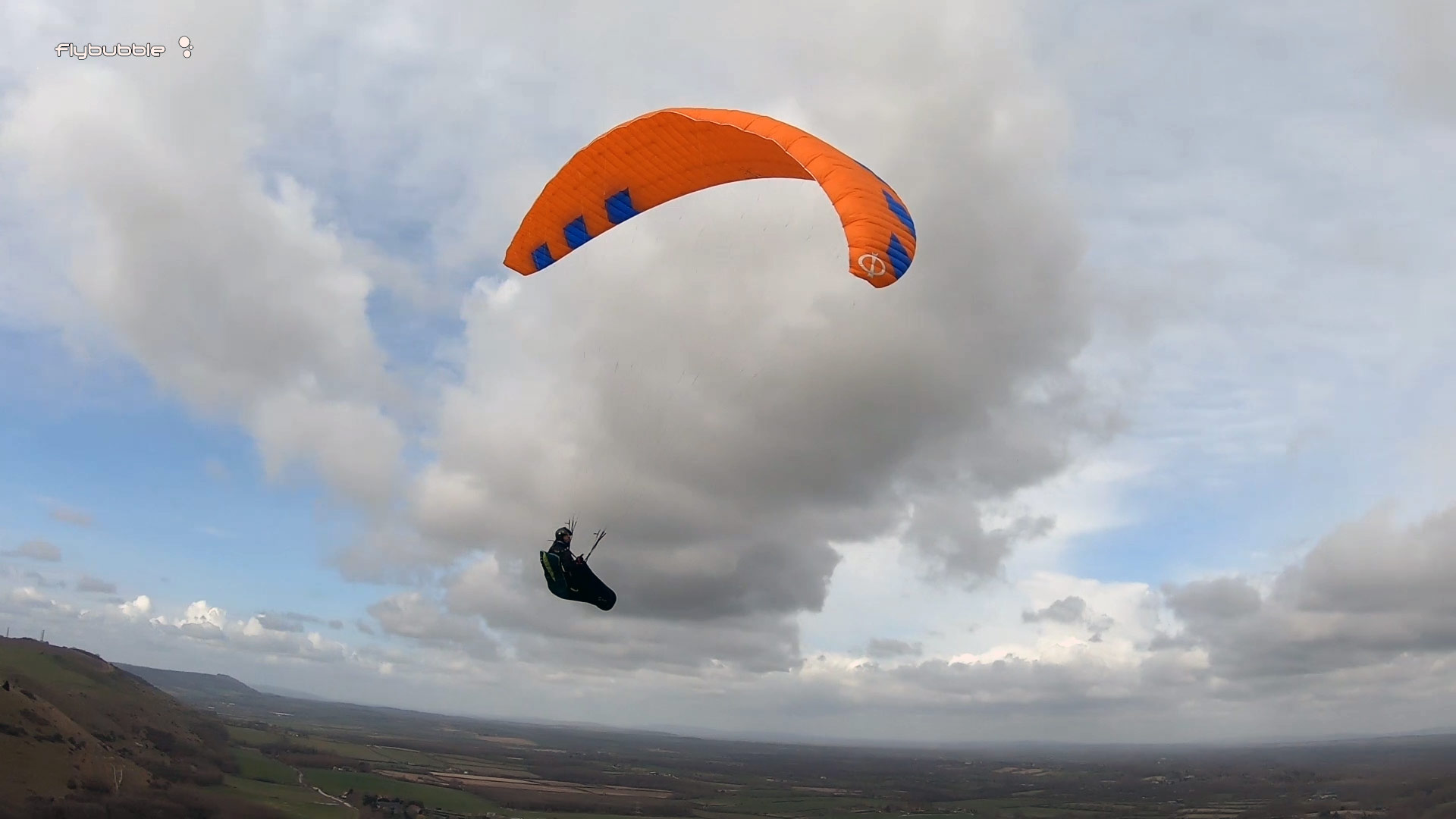
There is very little energy to manage when thermaling, it settles itself into a nice tight, climbing, gently banked turn with moderate brake pressure. I found it easy to let it go around on the inside brake alone. It is tolerant of heavy braking and doesn’t surprise you with a sudden spin. It responds nicely to weightshift input and has a slightly restrained feeling and tendency to flatten out after 180 degrees, but this produces a lovely balance that will serve pilots well during longer flights. Overall, I’d describe the handling as ‘easy, light, responsive yet restrained, and calm’.
On glide it is very steady and pitches very little as it passes through turbulence.
Safety
The calm nature of the wing limits the energy you’ll have to manage during collapse scenarios. I found it entirely predictable in stalls, spins and extreme pitches, fairly roll stable and reassuring, with an average resistance to stalls during toplanding. The tips flap a little during big ears but don’t disturb the pilot, and they reinflate slowly, on their own.
Flying accelerated
The MAESTRO now offers risers with a BC connector system, which I've tested thoroughly. The way it is designed doesn't interfere with the ground handling or complicate stalling the wing down using the rear risers in stronger winds. It's simple to use for active flying / course correction and is optimised for ease of use. I liked that the upper part of the C risers is kept quite free/loose, allowing you to use them for most active flying, course adjustment whilst on glide on bar, even at max speed. Only when the conditions got really sporty did I prefer to go back to using the brakes for active flying.
Performance
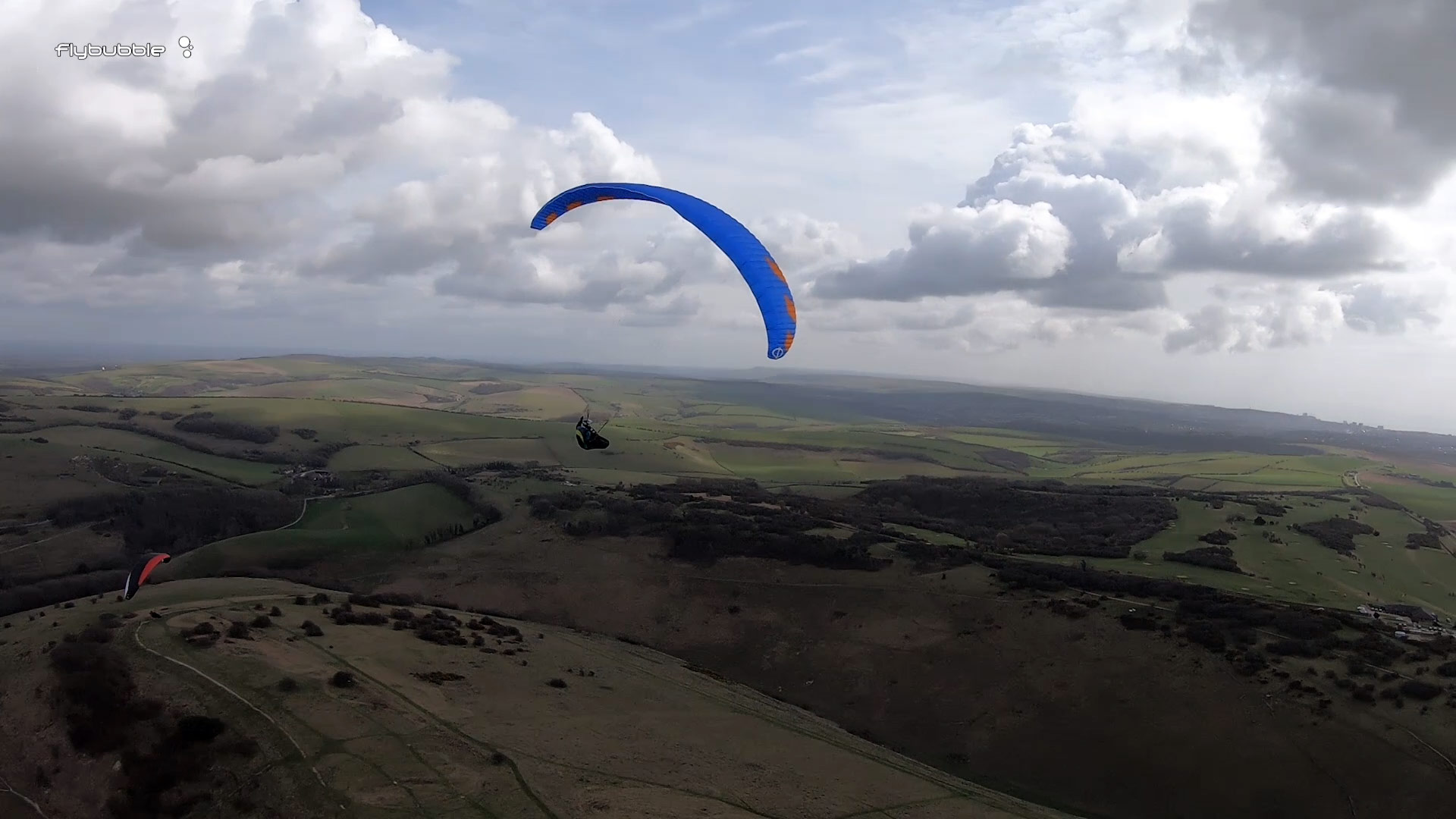
From the limited comparisons I’ve been able to do, it seems to me it’s at the top of the class when gliding, and it has an efficient thermaling turn. I expect during XC flying you’ll only start pulling away from a good pilot on a MAESTRO by stepping up to a two-liner and attempting long into-wind transitions. This means that for most pilots, it’s all you’ll ever need.
Phi MAESTRO: Who is it for?
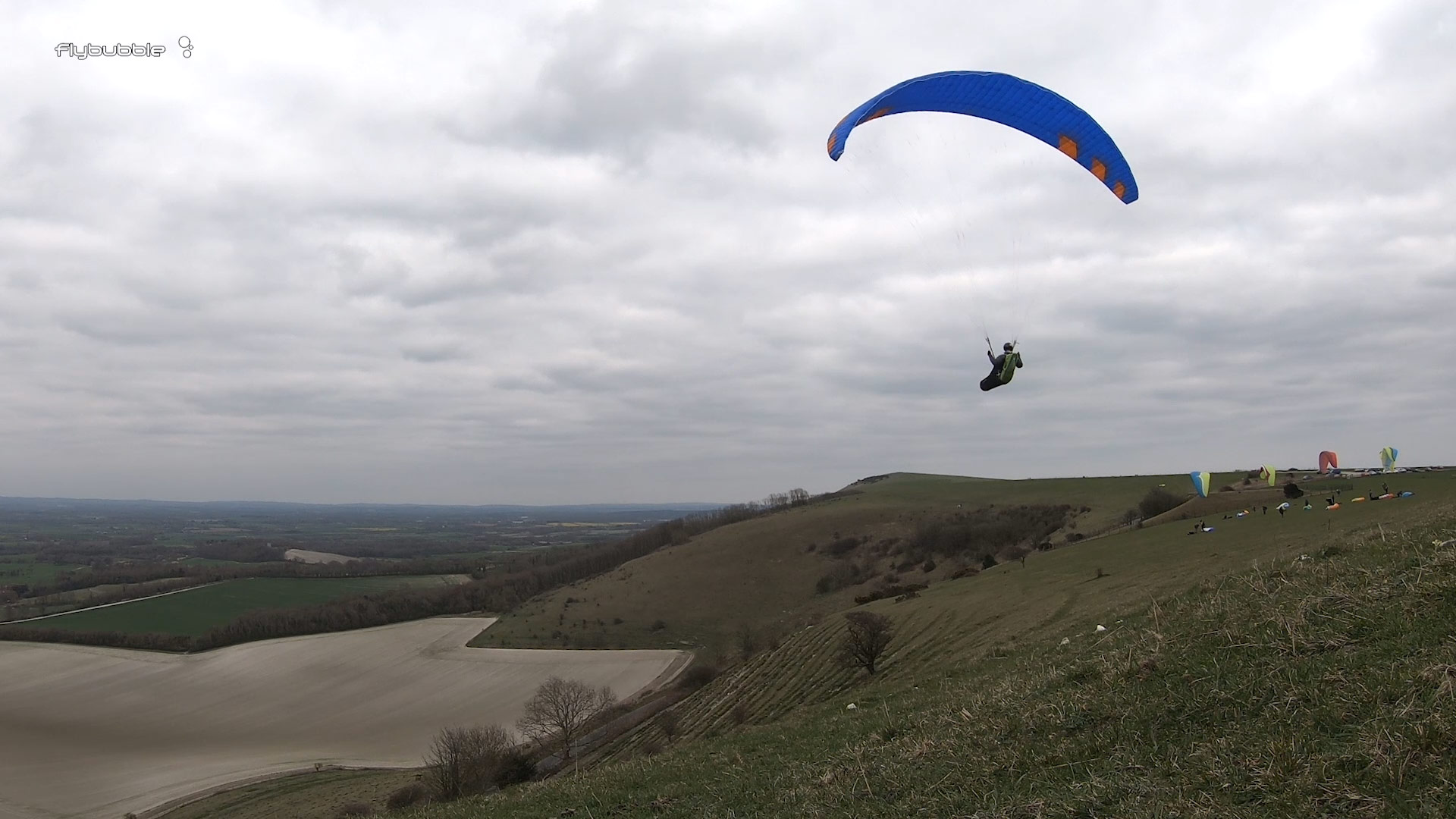
It’s a glider that demands some skill, and in return gives you great contact with the air. It is smooth and relaxing, offering feeling and feedback, with limited energy.
Overall, the MAESTRO is positioned at the top of the XC class. It’s not something I feel should rather have been released as a ‘C’ (Sports Class), it’s a true ‘high B’ but it’s more suited to those who want to become a maestro rather than those who need a mentor. There, I said it!
Phi MAESTRO: video review
Greg, Carlo and Nancy fly the MAESTRO at various sites to analyse the character
Phi MAESTRO: Flybubble crew feedback
Flybubble crew members are spoiled for choice when it comes to freeflight equipment - they are free to pick whichever kit they want to fly--whatever they love--most. This year Carlo, Nancy, Simon and Boris have each independently chosen the MAESTRO as their personal XC wing, which tells you something!
For his personal flying, Boris usually flies high B wings. He flew the Gin Sprint EVO for a few years, and tested the pick of the high B wings, before selecting the MAESTRO: "I found the MAESTRO has the right level of agileness and active flying comfort to offer the right progression for me. The wing gives me more feedback on what the air is doing. The risers, line layout and colours are clear and easy to manage, which makes ground-handling a doddle. I did find big ears a little susceptible to rolling, requiring weight shift to counter-act, but they are very effective. Overall I love the dynamic handling of the wing and the fun feeling I get when flying it. Since this is the most important factor to me, I chose the MAESTRO over all the other wings I tried."
Simon and Carlo usually choose to fly EN C or D wings for their personal flying. They both independently chose to fly the superb Advance SIGMA 10 before, and still love to fly this exceptional sports class wing!
Of the MAESTRO, Simon says: "It's like a box of chocolates, with only the good ones left!"
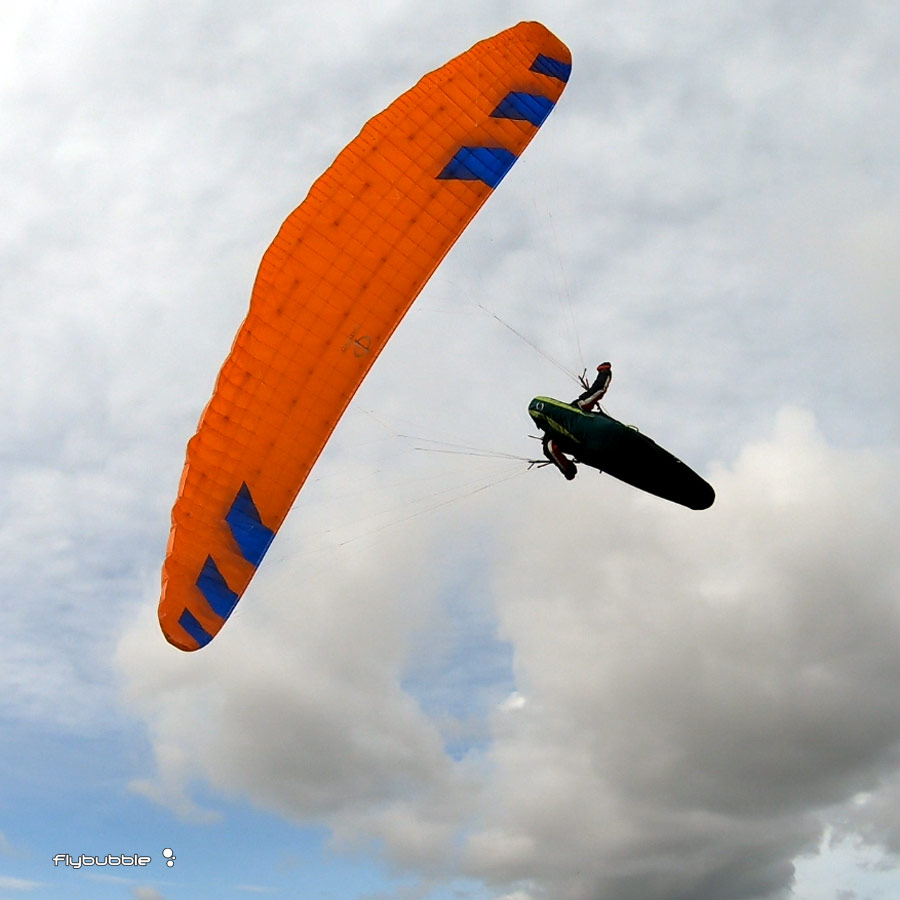
Carlo adds: "What I like most about the MAESTRO is its exceptionally well-balanced all-round behaviour, and big fun factor. The semi-light construction and low pack volume is appreciated. Light and compact yet still durable enough for playing around on the ground. Superbly well-balanced behaviour in inflation and launch. It is a real joy to kite around the hill. The wing can be a bit tricky to hold down in really strong winds, but can be pinned with rear risers in combination with brakes.
Pilots looking for an all-round top performing XC Class wing who like nippy, responsive handling, the ability to turn on a sixpence yet climb very efficiently at the same time, excellent energy conversion, crisp feedback and a big fun factor are likely to LOVE the MAESTRO. It's not like the more pitch dampened, muted feedback wings such as the Nova Mentor 5 and 6 or Ozone Rush 5. It's a wing that's been designed for those with a bit more sensitivity, who like to know what's going on in the air around them, like the Advance Iota 2, Gin Explorer and Supair STEP (each with their own unique character).
Tight, broken and weak areas of lift is where the MAESTRO really shines, pilots will find themselves often able to turn tighter than most other wings, honing in more on a small core. As well as the responsive handling and excellent energy retention, I am sure that the moderate aspect ratio of the wing contributes to its tight turning ability. It requires a bit of finesse to turn tight. Easing up on the inside brake for just a moment to regain speed leads to a very pleasing increase in climb rate, more akin to what you might expect from a higher-rated wing.
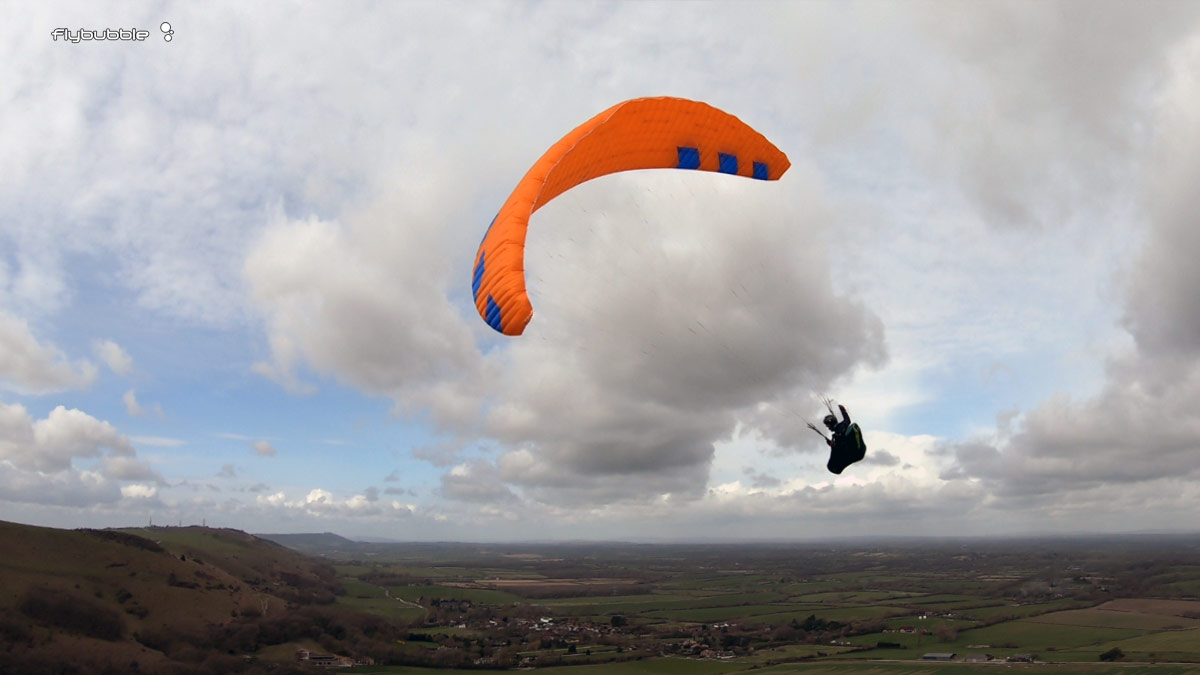
The MAESTRO gives a relatively high level of feedback for its class, similar to the Gin Explorer, but with a lower pilot demands--most likely related to the MAESTRO's much lower aspect ratio--especially on the ground. Some pilots used to a more dampened/muted wing might find this disconcerting at first, and take a bit of time to get used to, particularly when flying in rowdier air. The more I fly the MAESTRO, the more I realise that you can let it go i.e. let it fly. Of course you still need to fly actively, like all paragliders, but it is actually more solid than the feedback it gives at first suggests. And when it collapses--as all paragliders can in grumpy air--then it is exceptionally well behaved for its class.
So the MAESTRO tells you what the air is doing, which granted might make you less relaxed--more aware--when the air is rough, but then behaves in a very forgiving way for the class. I think that's a good way for a wing to be. I'd rather that than a wing that leads me into a false sense of security but then suddenly fall out of the sky.
The exceptional performance of the MAESTRO combined with the undemanding nature in turbulence hits the sweet spot for me. The feeling of being connected with the air generates pilot happiness: it puts me in the moment and makes me smile. My main complaint about the MAESTRO - I am not getting out to fly it nearly enough! Which is part of the reason, despite flying for over 27 years and thousands of hours, I choose to fly a high B wing."
Nancy usually flies high B or EN C wings for her personal XC flying. She flew the impeccable Advance IOTA 2, which she still loves to fly, before she decided to change to the MAESTRO as, to her surprise, she found that she liked it even more: "Exceptional, joyful manoeuvrability, great precision in turns. Superb sink rate, climbs like a dream! In my opinion it's the highest performing true 'High B' (XC class) wing available. Most of all, my MAESTRO makes me smile!"
Of course, being equipment aficionados, The Flybubble crew are always testing new things and searching for the perfect wing so expect to see us flying different equipment from day to day!
Find out more about the Phi MAESTRO
Also available in a fully certified lightweight version, the Phi MAESTRO X-ALPS
As always, when considering a new wing it’s worth taking the time to discuss your experience, aspirations and full equipment to be sure you get the right match. That is our unique advantage. Along with the extensive demo fleet we keep in stock, and our broad knowledge of current designs, we can take your current gear in part exchange. If you’re getting a new wing, consider our MATCH service.
Brought to you by Flybubble
Like what we do? The best way to thank and support us is to buy gear from us and recommend us to others. Review our service on Trustpilot and our products on Flybubble Shop. You can also subscribe to Flybubble Patreon. Thank you!

